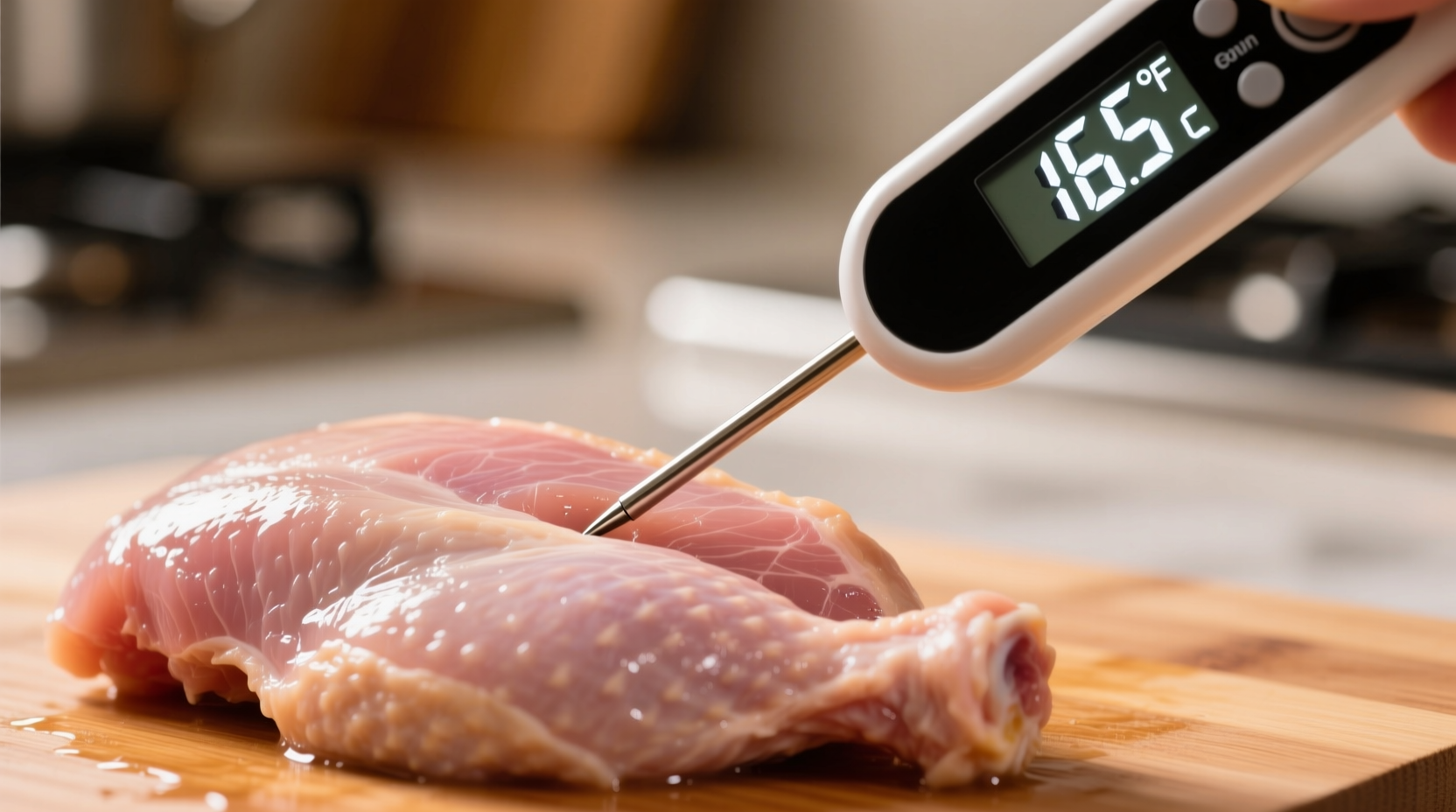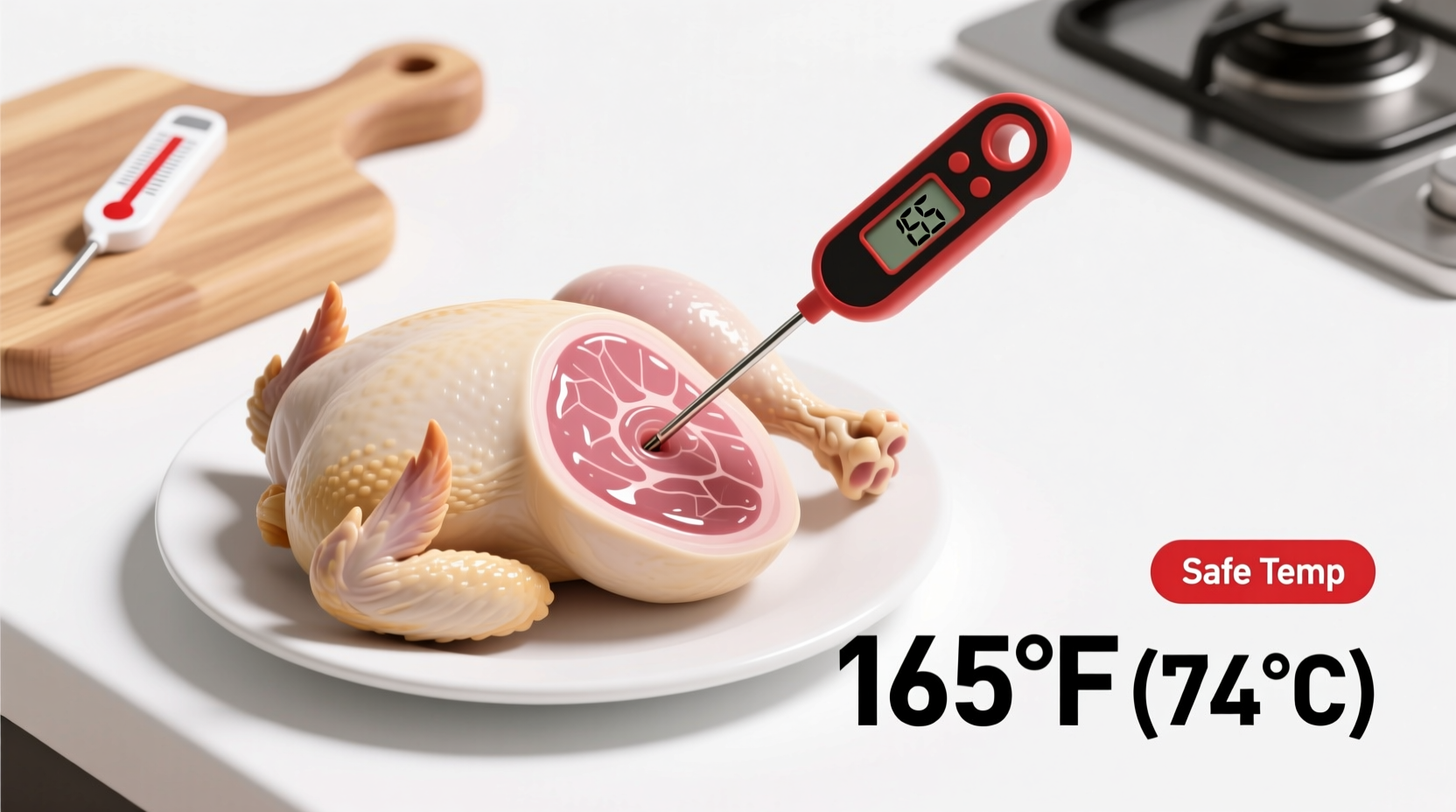Chicken must reach 165°F (73.7°C) internally to be safe to eat. This USDA-mandated temperature destroys harmful bacteria like salmonella and campylobacter. In this guide, you'll learn exactly how to measure, verify, and achieve perfect doneness every time—plus avoid common cooking mistakes that risk foodborne illness.
The Science Behind Safe Chicken Temperatures
Understanding why 165°F matters goes beyond simple rule-following. When chicken reaches this critical temperature, harmful pathogens that cause foodborne illness are eliminated within seconds. The USDA's Food Safety and Inspection Service confirms this temperature destroys Salmonella, Campylobacter, and other dangerous bacteria commonly found in poultry.
Contrary to popular belief, color isn't a reliable indicator of doneness. The USDA emphasizes that chicken can appear pink yet still be safe if it's reached 165°F internally. This happens because myoglobin—a protein in meat—can retain pink hues even at safe temperatures, especially in younger birds or when cooked with certain marinades.
How to Accurately Measure Chicken Temperature
Using a food thermometer correctly is non-negotiable for food safety. Here's the professional method:
- Select the right thermometer: Digital instant-read thermometers provide the most accurate results (±0.5°F)
- Target the thickest part: Insert the probe into the deepest section of meat, avoiding bones
- Check multiple spots: Especially for larger cuts like whole chickens or turkey breasts
- Wait for stabilization: Keep the thermometer in place until the reading stops changing (typically 10-15 seconds)
| Chicken Cut | Recommended Target Temp | Resting Time |
|---|---|---|
| Breasts & Tenders | 160-162°F (remove at 155°F) | 5-8 minutes |
| Thighs & Drumsticks | 165°F (remove at 160°F) | 8-10 minutes |
| Whole Chicken | 165°F in breast & thigh | 15-20 minutes |
Temperature Myths That Could Make You Sick
Many home cooks follow dangerous practices based on misinformation:
- "The juices run clear" myth: Clear juices don't guarantee safety—pathogens can survive well before juices clear
- "160°F is enough" misconception: While some chefs pull chicken at 160°F, the USDA requires 165°F for immediate safety without precise timing
- "Resting time cooks the meat" error: While carryover cooking happens (typically 5-10°F rise), it's unreliable for reaching safe temperatures

Special Considerations for Different Cooking Methods
While the target temperature remains constant, cooking techniques affect your approach:
Grilling & High-Heat Methods
With direct high heat, chicken can develop a safe internal temperature while maintaining juiciness. Monitor closely as temperature rises rapidly—breasts can go from perfect to dry in under 90 seconds at 400°F+.
Sous Vide Precision Cooking
This method allows cooking at lower temperatures for extended periods. The FDA Food Code permits holding chicken at 145°F for 8.5 minutes or 150°F for 2.8 minutes to achieve the same pathogen reduction as 165°F instantly. However, the USDA maintains 165°F as the standard recommendation for home cooks due to equipment variability.
Slow Cooking & Braising
When cooking chicken in liquid for extended periods, ensure it reaches 165°F during the process. The moist environment helps maintain tenderness even at safe temperatures, unlike dry-heat methods.
Critical Food Safety Timeline
Understanding the temperature danger zone is crucial for preventing bacterial growth:
- 40°F-140°F: Bacteria double every 20 minutes in this range (USDA Food Safety)
- 140°F-150°F: Pathogens begin dying but require sustained time
- 150°F-160°F: Salmonella dies within 3-5 minutes
- 165°F: Instant pathogen destruction (USDA FSIS)
Practical Tips for Perfect, Safe Chicken Every Time
Professional chefs follow these evidence-based practices:
- Calibrate your thermometer monthly using ice water (32°F) or boiling water (212°F at sea level)
- Let chicken rest 5-10 minutes after cooking—internal temperature continues rising 5-10°F during this time
- Sanitize your thermometer between measurements with hot soapy water or alcohol wipes
- Don't wash raw chicken—this spreads bacteria (CDC)
- Store leftovers within 2 hours (1 hour if room temperature exceeds 90°F)
When to Trust Lower Temperatures (And When Not To)
While some professional kitchens use lower temperatures with precise timing, the USDA maintains 165°F as the universal standard for home kitchens. The FDA Food Code allows alternative time-temperature combinations for commercial kitchens with strict monitoring protocols, but these require specialized equipment most home cooks lack.
For vulnerable populations—children, elderly, pregnant women, and immunocompromised individuals—strict adherence to 165°F is essential. The CDC reports that salmonella causes approximately 1.35 million infections annually in the US, with poultry being a primary source.











 浙公网安备
33010002000092号
浙公网安备
33010002000092号 浙B2-20120091-4
浙B2-20120091-4